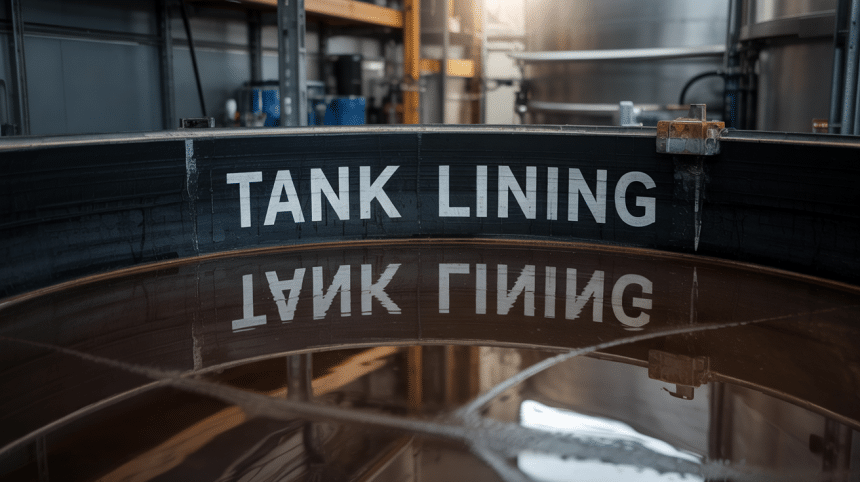Tanks fail. When they do, the costs can be huge – both for your wallet and the environment. Most tank owners don’t know that proper lining can add years to a tank’s life and save thousands in repair costs.
Tank lining isn’t just a coating – it’s a shield that stops rust, leaks, and chemical damage. The right lining system can double or triple your tank’s useful life.
Want to know how to pick the best lining for your tanks? Looking for ways to spot problems before they become costly? Need to understand maintenance steps that will keep your tanks working well?
This guide walks you through everything you need to know about tank lining options and how they safeguard your valuable assets.
What Is Tank Lining?
Tank lining is a protective coating put inside storage tanks to prevent damage. Its main job is to stop tanks from breaking down when they hold liquids like water, chemicals, or oil. Without good lining, tanks can rust, leak, and fail much faster.
Tank lining works as a wall between the tank material and what’s stored inside. This helps tanks last longer and keeps the stored contents clean and safe.
Several types of tank linings exist for different needs:
- Epoxy linings bond well to metal and create a hard, smooth finish. They work well for water tanks and mild chemical storage.
- Rubber linings flex and stretch, making them good for tanks that hold acids or bases. They can handle changes in temperature better than some other options.
- Glass-fused linings join glass to steel at high heat. These linings resist most chemicals and don’t wear down easily, but they cost more than others.
- Polyurethane linings offer strong defense against scrapes and bumps. They’re used when tanks might face physical stress.
- Vinyl ester linings stand up well to many harsh chemicals and high heat. They’re picked for tanks with tough storage needs.
The right lining choice depends on what you’ll store, how long you need it to last, and your budget for the job.
Why Tank Lining is Essential for Protection?
Unlined or poorly lined tanks face serious risks.
Corrosion can eat through metal walls, causing costly leaks. These leaks might harm the environment and lead to fines or cleanup costs. What’s worse, the contents can become dirty if the tank material breaks down and mixes with stored liquids.
Tank linings create a strong barrier that stops these problems.
A good lining keeps tanks from rusting or wearing out when exposed to chemicals, water, or other substances. This protection means tanks stay strong longer and need fewer fixes.
Many tanks can last twice as long with proper lining, saving money on early replacement.
The small cost of quality lining pays off by cutting down on maintenance, preventing spills, and keeping stored materials pure.
Types of Tank Linings: Finding Your Perfect Match
1. Epoxy Lining

Epoxy is a tough coating that sticks well to metals and creates a strong shield.
- Fights off most chemicals and stops rust in its tracks
- Lasts for years, even with rough handling or strong contents
Pro Tip: For best results, make sure tanks are fully clean and dry before applying epoxy lining. Even small amounts of moisture can weaken the bond.
2. Polyurethane Lining
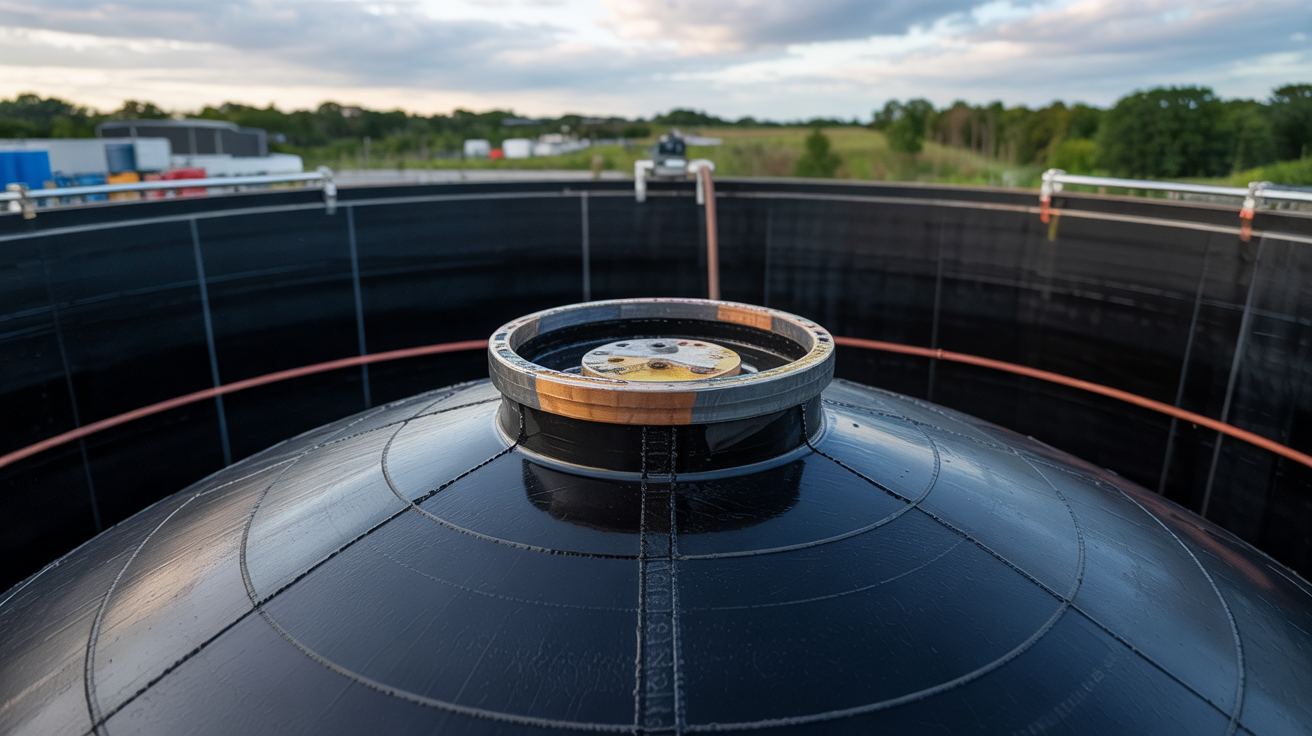
This stretchy but strong lining bends without breaking, even as tanks expand and shrink.
- Holds up against oils, fuels, and many solvents
- Can handle both hot and cold conditions without cracking
Pro Tip: Choose polyurethane when your tank will face changing temperatures, as its flexibility prevents cracks during expansion and contraction cycles.
3. Fiberglass Lining
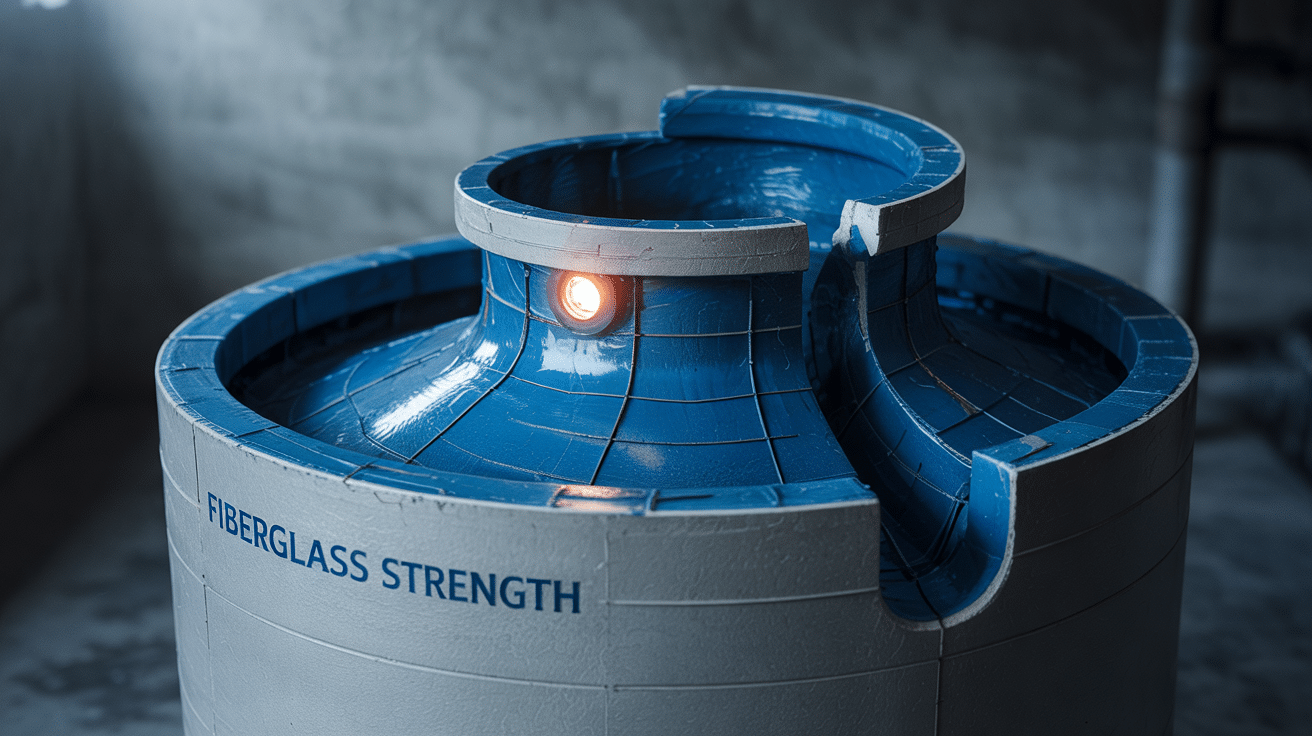
Made from glass fibers mixed with resin, this lining offers strength without much weight.
- Stands firm against heat, cold, and sunlight
- Won’t break down when exposed to many harsh chemicals
Pro Tip: When installing fiberglass lining, pay extra attention to corners and seams – these areas need additional reinforcement to prevent weak points.
4. Rubber Lining
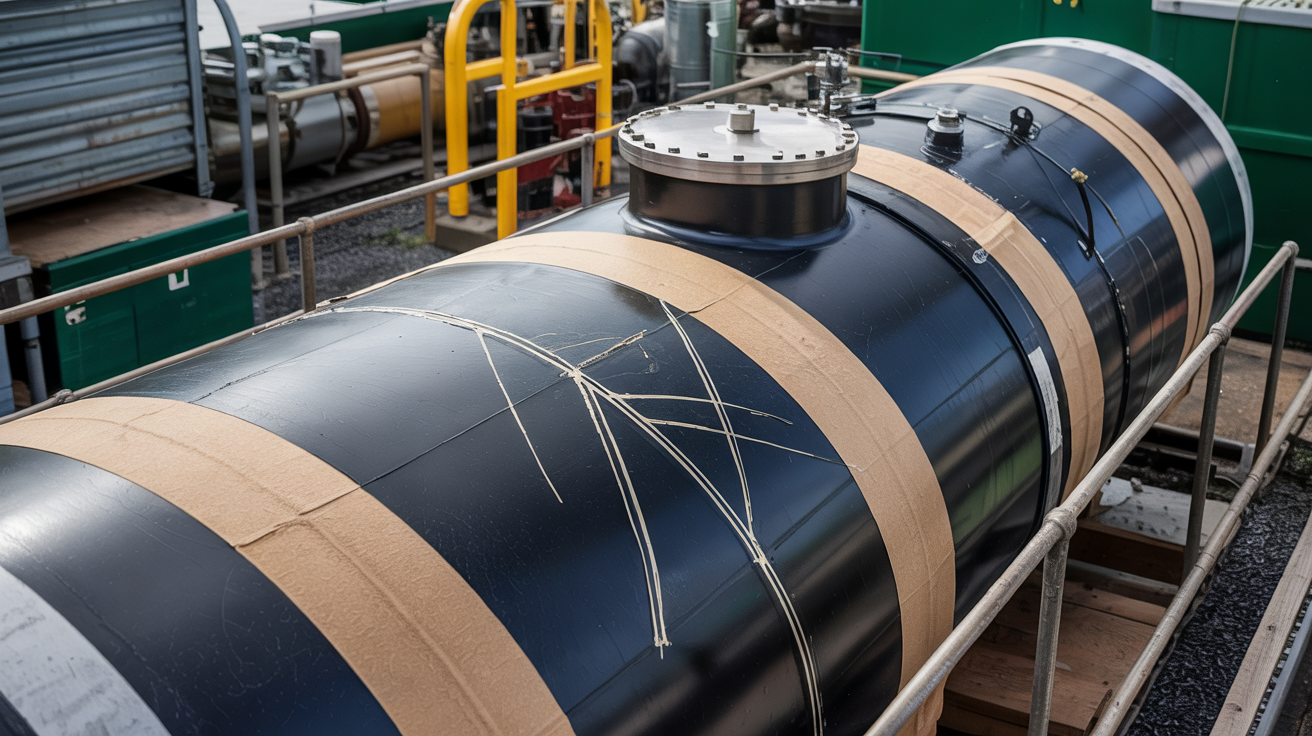
Soft but tough, rubber linings absorb impacts and resist many harmful substances.
- Handles scrapes and bumps without damage
- Creates a water-tight seal that blocks even tiny leaks
Pro Tip: Inspect rubber linings yearly for small cuts or tears – catching these early means simple repairs instead of full replacement.
5. Glass-Fused-to-Steel Lining
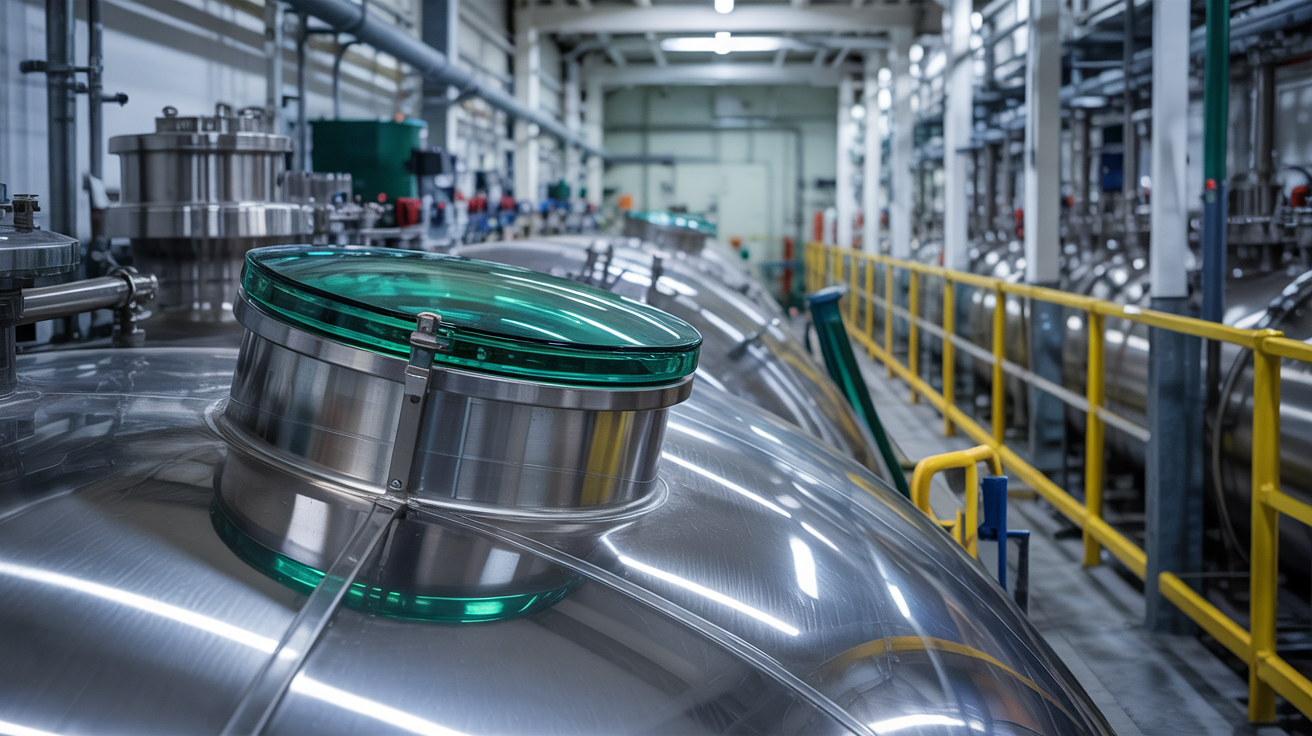
This special process joins glass to steel at very high heat, creating an extremely durable surface.
- Nearly impossible to scratch or wear down
- Stays clean easily and doesn’t harbor bacteria
Pro Tip: Though more costly upfront, glass-fused-to-steel linings often prove cheaper over time due to their exceptional lifespan and minimal maintenance needs.
Factors to Consider When Choosing a Tank Lining
Picking the right tank lining requires careful thinking. The wrong choice can lead to problems down the road. Here are key factors to keep in mind when selecting a tank lining:
1. Material Compatibility The lining must work well with what you store in the tank. Some chemicals react badly with certain linings. Check the maker’s guide for what works with your stored items. Ask for test results if you’re not sure.
2. Temperature Range Tanks often face hot and cold conditions. Your lining needs to handle these changes without cracking. Look for linings tested in varied heat settings. Some work best in steady temps, while others can take big swings.
3. Wear Resistance Think about how much the tank contents will move around. More movement means more wear on the lining. If your tank has flowing liquids or solid bits, pick a tough lining. Less durable options may work for still storage.
4. Ease of Cleaning Some tanks need regular cleaning. Smooth linings make this job simpler. Rough surfaces can trap dirt and bugs. Consider how often you’ll clean and what methods you’ll use.
5. Lifespan and Cost Cheaper linings might save money now but cost more later. Figure out the total cost over time, not just the first price. A good lining should last many years with proper care.
6. Safety Standards Different fields have different rules. Food storage has strict health codes. Chemical tanks need proper safety ratings. Make sure your lining meets all needed rules in your field.
7. Installation Process Some linings need special prep work or curing time. This affects how long your tank will be out of use. Ask about drying times and when the tank can return to service.
8. Repair Options Even good linings may need fixes. Ask if the lining can be patched or if full removal is needed for repairs. This affects future costs and downtime.
By looking at these factors, you can find a tank lining that fits your needs. Remember to get input from experts who know your field and tank type
Common Mistakes with Lined Tanks
- Skipping proper surface preparation before applying new lining. Dust, oil, rust, or moisture left on tank surfaces stops the lining from sticking well, leading to early failure and peeling.
- Mixing incompatible chemicals with your lining type. Even brief exposure to the wrong substance can cause permanent damage to your lining, creating weak spots that grow worse over time.
- Ignoring small damage signs until they become major problems. Small cracks or bubbles in lining might seem minor but can quickly spread and lead to complete lining failure and costly tank repairs.
- Using incorrect cleaning methods that harm the lining. Harsh brushes, high-pressure washing, or strong solvents can wear down protective layers, even when trying to keep tanks clean.
- Cutting corners on installation to save money upfront. Rushing the curing time, applying too thin layers, or hiring inexperienced contractors often results in poor lining performance and early replacement needs.
Conclusion
Tank lining serves as a key defense for your storage systems. With the right lining choice and proper care, you can extend tank life by many years.
Remember to match your lining to what you’ll store. Consider temperature ranges, check for good installation, and stick to regular maintenance checks. These steps will save you money and prevent costly failures.
Small issues fixed quickly stay small. Ignored problems grow into major repairs.
Your tanks represent a significant investment in your operation. Good linings protect that investment and ensure smooth, safe operations day after day.
Need help choosing the right lining for your tanks? Have you faced challenges with tank linings in the past? Share your experiences in the comments below, or reach out to our team for specific guidance.

